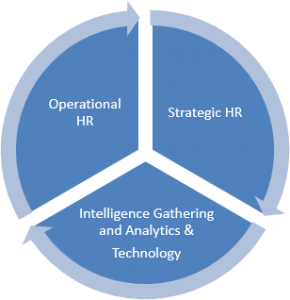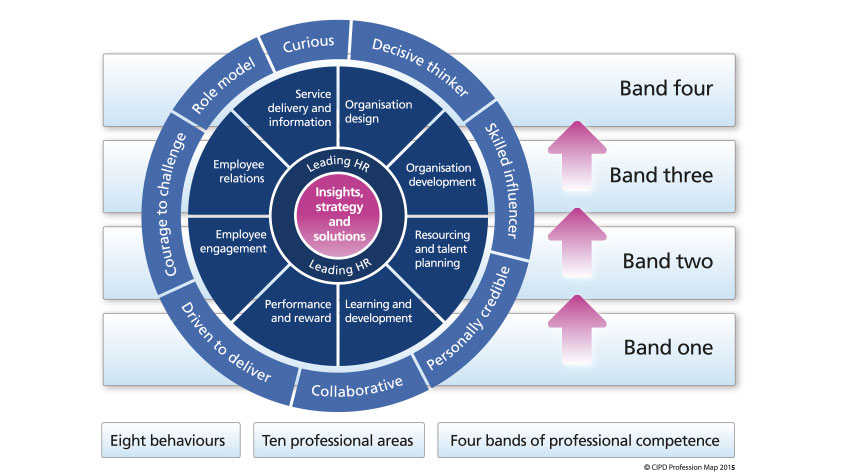Editor's Note: Take a look at our featured best practice, McKinsey Talent-to-Value Framework (230-slide PowerPoint presentation). Curated by McKinsey-trained Executives Unlocking Business Excellence: The McKinsey Talent-to-Value Framework Toolkit In the dynamic world of modern business, staying ahead of the competition means maximizing the potential of your most critical asset – your people. The **McKinsey [read more]
The Journey from the Age of the Tool to the Present (Part 7)
Also, if you are interested in becoming an expert on Human Resource Management (HRM), take a look at Flevy's Human Resource Management (HRM) Frameworks offering here. This is a curated collection of best practice frameworks based on the thought leadership of leading consulting firms, academics, and recognized subject matter experts. By learning and applying these concepts, you can you stay ahead of the curve. Full details here.
* * * *
Editor’s Note: The Journey from the Age of the Tool to the Present is a 7-part series, tracing the journey humanity has taken from 2500 BC to modern times on the progress of Human Resources. This is a very comprehensive narrative that touches upon numerous management philosophies and concepts. To read the full series, take a look at the author’s profile page found here.
* * * *
I have found that establishing Decision Domain Councils can be incredibly helpful. Establish one called Human Performance Excellence and have the CEO and some individuals who are not the usual suspects such as the VP of Marketing or Product Development or the CTO or CIO involved with the HR Head who is Secretary and one of the other execs as Chairperson. This group is accountable for creating the employer of choice positioning to attract the best talent and keeping them. They ensure special programs for developing the ‘leaders of tomorrow’ and having strategic succession planning such as offered by Rothwell. Each Council should be supported by a Strategic Business Improvement Team made up of high-potential cross-functional talented individuals. Their assignments from the Council must be given priority and their performance evaluations and recognition must be linked to their success.
Requiring senior executives to have (1) back to the floor experiences – going out and working in their retail operations, branch banks, whatever for 3 days going hand-to-hand with real customers and rubbing shoulders with their employees does wonders; (2) mandating that every senior executive not only listen to calls coming into the call center (if they know where it is!), but take calls for information or deal with complaints like Xerox and others have done; and (3) giving each senior executive responsibility and accountability for building exceptional relationships with one key customer account and key supplier organisation – their bonus depending on their success/performance in doing so. The frequency which senior executives are tuned into needs to be changed and these will work – I have used all of them with great success. There are more, but allow me to stop there. In each case at each Management Committee meeting, a sharing of learning from these experiences needs to happen and built upon.

For me, Strategic HR would probably be headed by an executive who knows absolutely nothing about HR other than how to manage people effectively in the position he or she has had in the past. It could be a CIO, CTO, CSO, CFO or others. The keys in my mind are these. Put someone in this position who is well respected by the CEO and leadership team and therefore can act a liaison with them and ensure things happen such as ensuring the right decisions are made to invest in people – help the organisation become more people-centric and unlock their full potential to contribute to the success of the organisation.
This position also would be on the career path of those whose aspirations are to move into a position of even greater responsibility. This experience should broaden them and give them the necessary competency set to help secure the long-term sustainability of the business.
The Operational HR executive would be an HR professional – but not just an ‘ordinary’ one. What do I mean? Someone who possesses relationship mastery, creativity, capability to interpret analysis of data and information related to people, is up-to-date on the latest studies, surveys and books on the subject of HR. They need to be someone who changes the image of HR from being a necessary evil or nuisance – something to be tolerated, to a true ally, coach and source of inspiration. Focus and delivery – on engagement, empowerment, enablement, involvement, creativity/innovation and more should be part and parcel of their remit and capabilities. They need to fully understand how to deliver value to the organisation which is clearly recognisable by the entire workforce and the CEO and leadership team.
The Strategic HR and Operational HR Executives would have joint ownership and evolution of the culture of the organisation. Right now, no one owns the culture of an organisation – it just sort of happens and then we live with it. Yes, as said before, the culture of an organisation can either be the biggest enabler or inhibitor of success – not something to be ignored or taken-for-granted.
The last component is having a ‘world-class sensing system’ which is continuously collecting, ‘refreshing’ the organisation’s understanding and insight into the people side of the organisation. It should allow the ‘new’ HR function to be ‘agile’ – to identify, assess and act on issues – opportunities or problems at ‘hyper-speed’. Optimising technology to enable people in the organisation to work more effectively and efficiently will be increasingly critical. Then to, as digitalisation, and even robots and artificial intelligence begin to play in more and more down the road eliminating some base level HR positions as well as those in other functions, transformation related to people and the HR Function will increasingly become an organisational priority.
In addition, the CIPD in the UK, one of the world’s most respected Human Resource organisations did a study in 2013 which resulted in the following model being developed which is where I shall leave the discussion for now. I leave this with you as ‘food for thought’ if you are an HR Professional reading this article:
I hope that the above Article has shed some additional light on the challenge ahead for HR. To me, at this point, HR is like a lifeboat of immigrants bobbing in a turbulent sea looking for a safe harbour and finding none. Let’s help get this sorted! It’s too important an issue not to!

Want to Achieve Excellence in Human Resource Management (HRM)?
Gain the knowledge and develop the expertise to become an expert in Human Resource Management (HRM). Our frameworks are based on the thought leadership of leading consulting firms, academics, and recognized subject matter experts. Click here for full details.
The purpose of Human Resources (HR) is to ensure our organization achieves success through our people. Without the right people in place—at all levels of the organization—we will never be able to execute our Strategy effectively.
This begs the question: Does your organization view HR as a support function or a strategic one? Research shows leading organizations leverage HR as a strategic function, one that both supports and drives the organization's Strategy. In fact, having strong HRM capabilities is a source of Competitive Advantage.
This has never been more true than right now in the Digital Age, as organizations must compete for specialized talent to drive forward their Digital Transformation Strategies. Beyond just hiring and selection, HR also plays the critical role in retaining talent—by keeping people engaged, motivated, and happy.
Learn about our Human Resource Management (HRM) Best Practice Frameworks here.
Readers of This Article Are Interested in These Resources

|
|
102-slide PowerPoint presentation
|
|
193-page Word document
| |||
About Dr. Ted Marra
Dr. Ted Marra is a strategic facilitator, organizational mentor and writer. He has lectured in MBA/EMBA programmes at universities in Boston, Detroit, the UK, Switzerland and Croatia. He is now a Member of the Board of MAX/Knowledge Now, a global learning organisation. He is also Sr. Partner for Insights Paradigm, a strategic advisory organization in Dubai, UAE. You can find Ted on LinkedIn here.
Top 10 Recommended Documents on Human Resources
» View more resources Human Resources here.
» View the Top 100 Best Practices on Flevy.














